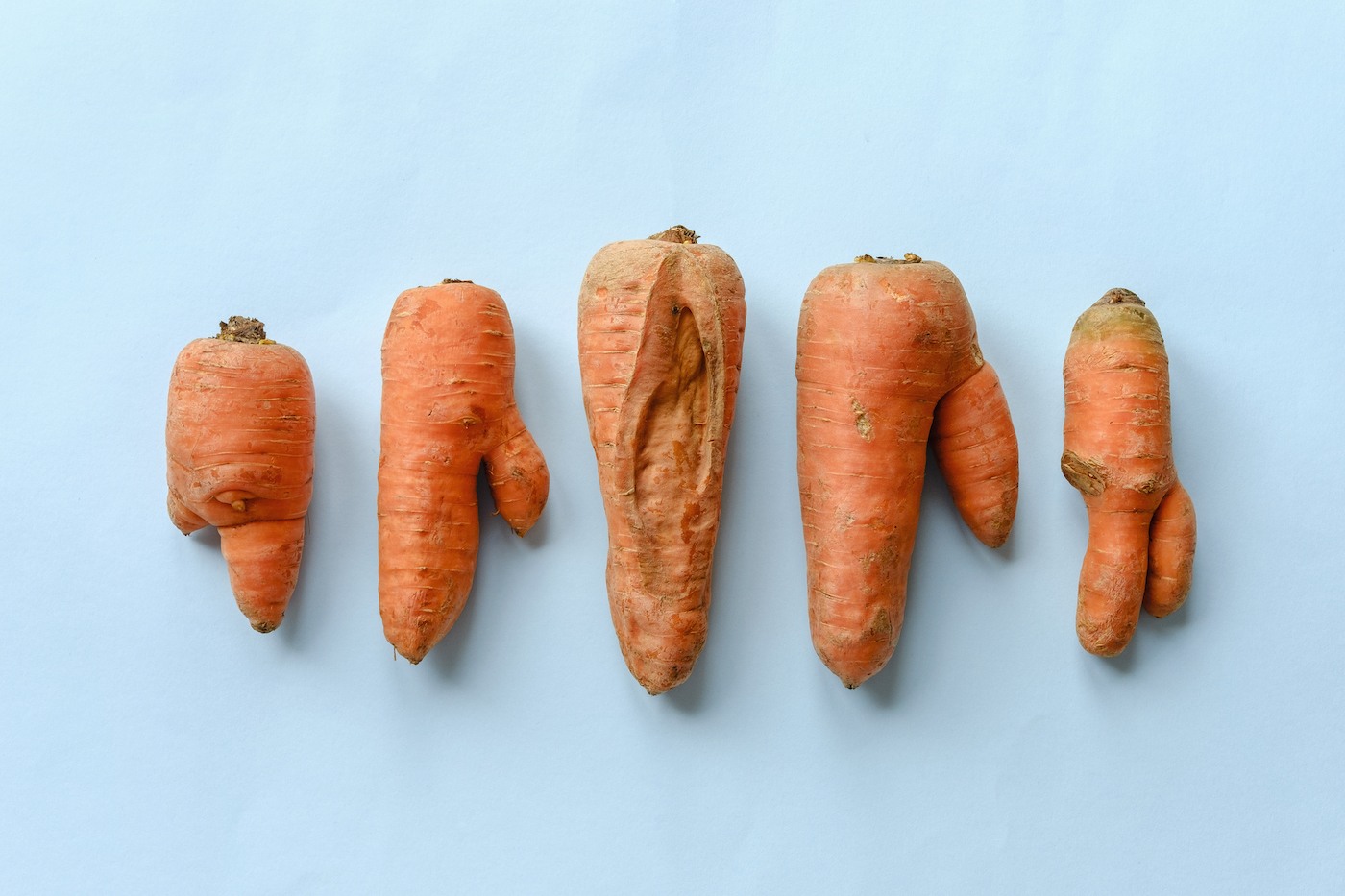
September 29, 2019 at 04:00PM by CWC
I’ve always considered myself a champion of the underdog. It’s the reason why I hate the Patriots even though I know exactly nothing about football, and why Jerry Gergich is my favorite character on Parks and Rec. And, most recently, it’s why I overturned my old way of shopping for vegetables and replaced perfectly spherical apples, rod-straight cucumbers, and bright purple eggplants with their, quote, “uglier” counterparts.
In an attempt to lessen the massive amount of food waste in the United States (an estimated $165 billion worth of food, which generates more than 3.3 billion tons of greenhouse gases annually and to make healthy eating more affordable for everyone—delivery services for less-than-perfect produce having been popping up right and left. “Almost half of what our nation’s farms grow is never eaten,” says Abhi Ramesh, founder and CEO of Misfits Market, one such service. “In fact, a recent study from the University of Santa Clara reported that a staggering 33 percent of U.S.-grown food is unharvested or left on the field.”
There are lots of causes behind our food waste problem, including people not cooking everything they buy before it expires, restaurants and cafés over-ordering food that ends up not getting eaten, and issues with industrial processing. But one big contributing factor is our own tendency to prefer perfect-looking food. “One reason for this abundance of food waste is that mass supermarket chains have deemed misshapen, scarred, or abnormal-looking produce simply unsellable,” explains Ramesh. The ugly vegetables and fruits go unsold and then get tossed, despite having nothing really wrong with them.
“Almost half of what our nation’s farms grow is never eaten.” —Abhi Ramesh, founder and CEO of Misfits Market
ADVERTISEMENT
ADVERTISEMENTKate Spade Autumn/Winter Sale |
ReFED, a non-profit foundation dedicated to reducing U.S. food waste, has estimated that selling imperfect produce—rather than tossing it in the garbage—could reduce green house gas emissions by 422 thousand tons and save 39 billion gallons of water. TL; DR? Eating your (ugly) vegetables can help diminish food waste in a major way.
Why so many of us are afraid of ugly food
Back when my mom used to pack my lunches, she would occasionally include a slightly-bruised apple. Depending on how hungry I was, I would either eat around the soft spot or throw it away entirely. Yet experts say that bruised fruit is 100 percent okay to eat. So what gives? Why are so many of us hooked on flawless fruit?
As Ramesh points out, what produce vendors choose to purchase and display is one contributor. Yet another, says Ben Chesler, co-founder of Imperfect Foods, is expiration dates. “The federal government actually doesn’t regulate those dates, other than on baby food,” he says. “There’s ‘sell by’, ‘best buy’, ‘use by’, ‘expires on,’ but those are set by the manufacturer to guarantee peak freshness.” In reality, most produce can be consumed far after these dates have passed, but many people won’t take a chance on that. And if a carrot has a Captain Hook-esque curve at the end? Forget about it. It must be defective, right?
ADVERTISEMENT |
Wrong. As I learned over the course of one month only eating “lackluster” fruits and veggies, they’re just as genetically #blessed as their handsome brethren in the flavor department. Some, I daresay, are even more beautiful. (Plus, eating them helps the environment, so.)
What it’s like to eat 30 days worth of imperfect produce
My Misfits Market box arrived with two containers of gorgeous cherry tomatoes, hot and regular peppers, a metric ton of potatoes, kale, and all the tiny apples and pears I could eat. As of right now, the service delivers all across the east coast.
Because—alas!—I’m only one person, I ordered the $22 box (the company offers a bigger size for families) and enjoyed the vegetables as roasted sides, tossed into pastas, and cooked in omelettes. Just as Ramesh promised, everything tasted, well, pretty normal—except for the tomatoes. Which, to be quite honest, may have been better than even those you could find in Tuscany.
My experience with Imperfect Food was similar (ugly yet tasty produce), but with an extra bonus—the haul arrived with almonds and red lentils to supplement the overflowing stash of produce. A regular box from this purveyor of ugly veggies will set you back around $21 once you pay the delivery fee, and they’re currently delivering in spots across the East and West coasts, as well as the Midwest.
Even though I loved getting both boxes delivered straight to my front door, the project also made me take stock of my shopping habits at the supermarket. I found myself gravitating toward the apple with a bruise that might otherwise be thrown away. I willingly added a phallically-shaped cucumber to my cart—just because. My experiment with both services taught me that there was nothing wrong with the “uglier” produce on store shelves.
“Like people, all produce will look different—it’s what’s on the inside that counts,” Ramesh says. It’s a lesson worth learning—for your health and that of the environment.
ADVERTISEMENT

ADVERTISEMENT
Anya Hindmarch - I AM A PLASTIC BAGWondering how a dietitian shops at the farmer’s market? We’ve got the intel. Plus, exactly what you shouldn’t do when you’re washing your produce.
Author Kells McPhillips | Well and Good
Selected by CWC
ADVERTISEMENT
ADVERTISEMENTUp to 30% off Gift Sets |









